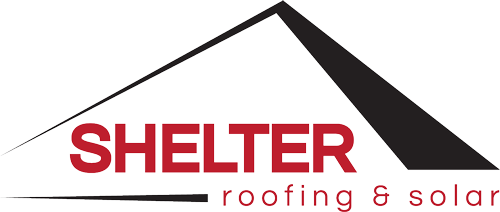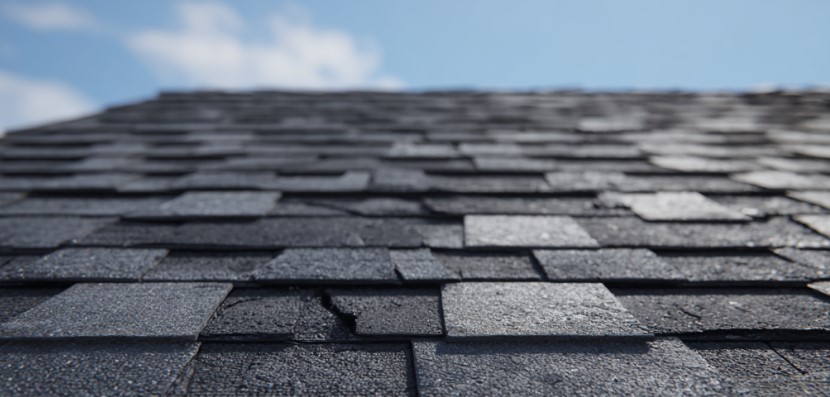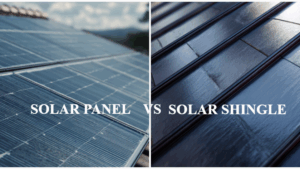If you’re like most homeowners, you probably don’t think about your roof until something goes wrong. A few missing shingles, maybe a small leak. It feels minor—until it’s not. The truth is, the quality of your roof installation plays a much bigger role than most people realize. And the risks of getting it done wrong? They’re not just inconvenient—they’re expensive.
At Shelter Roofing and Solar, we’ve been called out countless times to fix other contractors’ mistakes. It’s frustrating to see homeowners spending thousands to repair or replace a roof that should’ve lasted for decades. That’s why this topic matters. If you’re wondering what the dangers of poor roof installation really look like—or how to avoid the consequences of a bad roofing job—keep reading.
Let’s talk about what goes wrong, how to spot the red flags, and how to protect your home before the damage adds up.
Why Poor Roof Installation Is a Bigger Problem Than You Think
A bad roof job isn’t always obvious at first. It may look okay from the ground, especially if you’re not sure what to look for. But underneath the surface, issues are already forming—moisture seeps in, fasteners are out of place, and ventilation is off. That small leak or loose shingle you see today? It might be the start of mold growth, wood rot, or even structural damage.
The consequences of bad roofing jobs don’t just show up on your roof. They affect your attic, drywall, HVAC system, and your energy bills. Worst of all, by the time most homeowners realize the problem, warranties are void and insurance won’t cover the damage.
What Are the Common Signs of Improper Roof Installation?
There are some telltale signs you can watch for, especially in the first couple of years after a roof is installed. Even if everything looks fine now, these issues may be lurking.
Uneven or misaligned shingles
Shingles should run in clean, straight lines. If they’re crooked, gapped, or poorly spaced, it’s more than just sloppy—it could mean poor sealing, improper fastening, or rushed work. That opens your roof up to wind damage and premature aging.
Leaks around flashing or vents
When water starts coming in around a chimney, skylight, or pipe vent, that’s usually a flashing issue. Flashing is meant to seal off those tricky spots. When it’s done wrong—or skipped entirely—it’s just a matter of time before water finds a way in.
Missing underlayment or drip edge
You won’t know if these are missing just by looking from the outside. But underlayment and drip edge are critical components that protect your roof deck from moisture. If your contractor skipped them, you’re one heavy rain away from real problems.
Nails in the wrong place
Roofing nails have to go in precise spots. Too high, too low, too few, or overdriven—all of these weaken the shingle hold. Over time, that means shingles come loose, flap in the wind, or blow right off during a storm.
Poor attic ventilation
Your attic needs airflow. If your roofing contractor didn’t install proper vents, heat and moisture build up inside, cooking your shingles from underneath and raising your energy bills. In Thousand Oaks, where summers get hot, that kind of mistake costs you comfort and cash.
The Real-World Consequences of Bad Roofing Jobs
It’s easy to think you’ll just spot a problem and fix it. But the bigger issue with poor roofing work is that by the time signs show up, the damage is often deeper than you expected.
Water damage and mold
A leak doesn’t stop at your ceiling. Water soaks into insulation, seeps into walls, and sits inside structural wood, creating the perfect conditions for mold. Mold remediation isn’t cheap—and often, it’s not covered by insurance if the leak was due to poor workmanship.
Higher energy bills
If your roof isn’t properly sealed or ventilated, you’ll notice your AC working harder. That’s not just wear and tear on your system—it’s money out of your pocket every month. In Thousand Oaks, with long, dry summers, that inefficiency adds up fast.
Wasted warranties
Here’s a hard truth: even the best roofing materials are worthless if they’re installed incorrectly. Manufacturers won’t honor warranties on materials that weren’t installed to spec. That means if you have a failure, you’re paying for the fix out of your own pocket—even if the materials themselves were top-tier.
Lower home value
Home inspectors will spot a bad roof instantly. If you’re planning to sell your home and they find installation problems, you’re either going to lose potential buyers or eat a lower offer. A bad roof isn’t just a repair issue—it’s a resale problem.

How Shelter Roofing and Solar Gets It Right the First Time
This is where experience, process, and integrity come in. At Shelter Roofing and Solar, we don’t just aim for good—we’re in the business of building roofs that last. Here’s how we make sure every job gets done the right way.
No subcontractors
We don’t outsource our labor. Our crews are in-house, fully trained, and most have been with us for years. That means better quality control, cleaner job sites, and consistent results.
Manufacturer certifications
We’re certified by top roofing manufacturers like CertainTeed, Owens Corning, and GAF. That matters because it means we follow their exact specifications—and that keeps your warranty valid for the long haul.
Transparent estimates
Using advanced tools like EagleView and SumoQuote, we give you an accurate, detailed estimate up front. You’ll know exactly what materials we’re using, what the timeline is, and what to expect from day one.
Roof and solar done together
If you’re thinking about adding solar, don’t install it on top of a bad roof. We do both—roofing and solar installations in-house—so you’re not juggling two contractors or worrying about miscommunication between crews.
What to Do If You Suspect a Bad Roofing Job
If you’re reading this and realizing that something doesn’t feel right about your recent installation, don’t wait. Small issues become big problems fast.
Start with a professional inspection. We’ll evaluate your roof, let you know what’s working and what’s not, and outline your options. Whether it’s a minor correction or a full redo, you deserve to know where you stand.
Document everything. Keep your receipts, take photos of the problems you’re seeing, and note the dates. This helps if you need to dispute work, file a claim, or go back to the contractor.
And most importantly—act sooner, not later. If the installation was flawed, the longer you wait, the more it’s going to cost you in repairs, utility bills, or lost value.
Don’t Let a Cheap Roof Turn Into an Expensive Problem
There’s no shortage of contractors out there offering the “cheapest price.” But roofing is one of those things where you really do get what you pay for. A rushed or poorly installed roof will cost you more in the long run—through leaks, damage, and replacement years ahead of schedule.
At Shelter Roofing and Solar, we’ve spent over four decades doing it right. We’ve seen what happens when corners are cut—and we’ve built our name on doing things differently.
If you’re seeing warning signs, or you’re planning a new roof and want to make sure it’s done right, give us a call. We’ll walk the roof with you, give you a straight answer, and make sure you get a system that lasts—not just something that looks good for a season.
Go Smart with Shelter. Roofing. Solar. Batteries.




